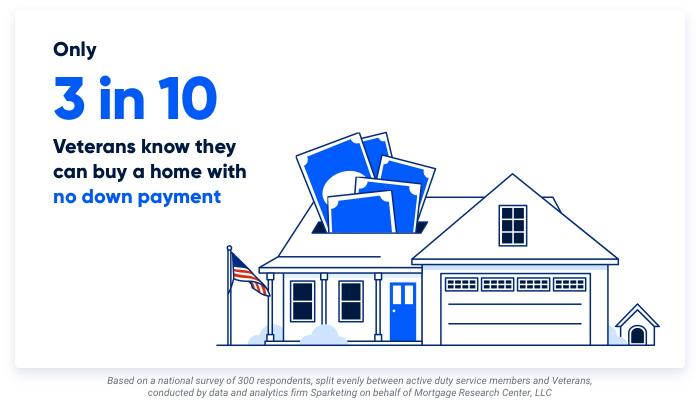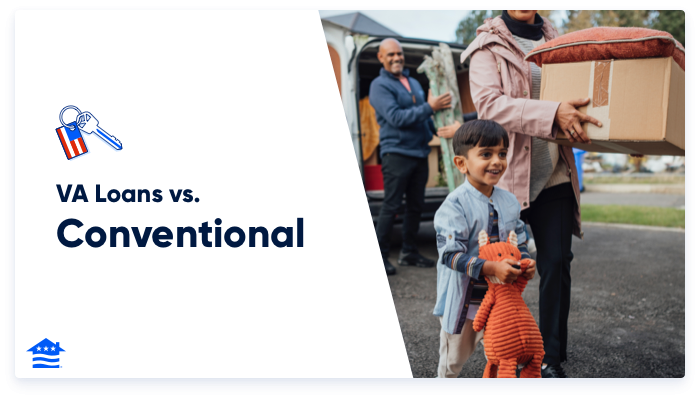Not all debt is created equal. When you can't pay off all your outstanding obligations, it sometimes makes sense to consolidate them to save money in the long run.
A VA Cash-Out refinance is a popular option for homeowners who want to use their home equity for a variety of reasons, from funding home improvements to paying for college. It's also a great opportunity to consolidate credit cards and other high-interest debts under one umbrella at an affordable rate.
However, there are pros and cons of using a cash-out refinance to pay off debt. Let's take a look at how this works with a VA loan and explore some key things to consider before you start.
What is a VA Cash-Out Refinance?
A VA Cash-Out refinance is a loan that allows homeowners with an existing mortgage — whether VA-backed or a conventional mortgage — to convert the equity in their home to cash. The new mortgage will be larger than the existing mortgage but can be a good idea for homebuyers with a substantial amount of equity in their home.
» MORE: Start your VA cash-out refinance
How to Use a VA Cash-Out Refinance to Consolidate Debt
Each Veteran’s financial circumstances are going to be different. Before you start, it’s important to make sure a VA cash-out refinance is going to be your best option to consolidate debt.
1. Figure Out How Much Cash You Need
Before you apply for a VA cash-out refinance, you should figure out how much cash you need to consolidate your debt. You shouldn’t take out more cash than you need, as this will only increase your mortgage payment and add to your debt load.
2. See if You Have Enough Equity Built Up
Equity is the difference between what you owe on your mortgage and what your home is currently worth. Lenders usually require you to maintain at least 20 percent equity in your home for a cash-out refinance, but the VA cash-out refinance allows you to borrow up to 100 percent of your home’s value.
3. See If You’re Eligible
Unlike the VA Streamline refinance, you don’t have to have an existing VA loan to refinance. Eligibility requirements for the VA cash-out refinance aren’t all that different from traditional VA purchase loans.
To be eligible, you must:
- Meet VA loan eligibility
- Occupy the home full-time
- Have an adequate amount of equity built up in your home
- Meet the lender’s minimum credit score requirements
4.Get in Touch With a VA Lender
Once you make sure you check all the boxes, it’s time to get in touch with a VA lender. Not all lenders offer VA-backed mortgages, so be sure to do some research beforehand.
5. Close on Your VA Cash-Out Refinance
Once you've gone through the underwriting process, you're ready to close on your loan. As was the case with your original mortgage, your refinance will also include closing costs. These typically range between 2% and 5% of your loan balance on a VA Cash-Out refinance. You may be able to roll these costs into your new loan, but keep in mind that this will reduce the amount of equity available for debt consolidation.
6. Receive Your Funds and Pay Off Debt
After you close on your loan and receive your funds, you’re ready to use your cash-out refinance to pay off your debts. Then it's just a matter of deciding which debt to tackle first.
What Debt Should I Pay Off First?
It can be tempting to want to pay off all your debts at once. However, it’s typically best to pay off the debt with the highest interest rate first. This will save you the most money in the long run and help keep your finances on track. If you don’t have any debts with particularly high-interest rates, then paying off multiple debts may make more sense.
Is a VA Cash-Out Refinance a Good Idea to Pay Off Debt?
Using a cash-out refinance for debt consolidation can be a good strategy, but it's important to weigh the pros and cons before making a final decision.
As always, you can reach out to a loan specialist to see if a VA Cash-Out refinance is right for you.
Advantages of Consolidating Debt With a VA Cash-Out Refinance
The biggest advantage of consolidating your debt with a cash-out refinance is that it can lead to substantial monthly savings. By consolidating high-interest debt into your lower-interest mortgage, you'll be able to free up more money each month to put towards other financial goals.
Using the funds from your cash-out can also be used in other areas of your life, such as remodeling your home. How you decide to spend those funds is up to you.
Drawbacks of Consolidating Debt With a VA Cash-Out Refinance
Relying on a cash-out refinance for debt consolidation comes with some drawbacks, too. The biggest disadvantage, as we've discussed, is that you're tying more debt to your home. If you fall behind on payments, you could lose your home.
Additionally, your mortgage clock might be set back, depending on your new loan. When you extract the cash from the equity in your home, you are increasing the amount of time it’ll take you to pay off your mortgage.
Be Careful How You Use Your Home Equity
A VA Cash-Out Refinance can be a great way to consolidate debt and save you money in the long run. But a cash-out refinance debt consolidation is not without risks. Before you use your home equity to pay off debt, be sure to review your options and consider the long-term impact of your decision.
Answer a few questions below to speak with a specialist about what your military service has earned you.
Related Posts
-
 VA Loan Down Payment RequirementsVA loans have no downpayment requirements as long as the Veteran has full entitlement, but only 3-in-10 Veterans know they can buy a home loan with zero down payment. Here’s what Veterans need to know about VA loan down payment requirements.
VA Loan Down Payment RequirementsVA loans have no downpayment requirements as long as the Veteran has full entitlement, but only 3-in-10 Veterans know they can buy a home loan with zero down payment. Here’s what Veterans need to know about VA loan down payment requirements. -
 VA Loan vs Conventional Loan: A Complete ComparisonHere we compare the primary differences between VA and conventional loans to show you when each option may be the best.
VA Loan vs Conventional Loan: A Complete ComparisonHere we compare the primary differences between VA and conventional loans to show you when each option may be the best.


